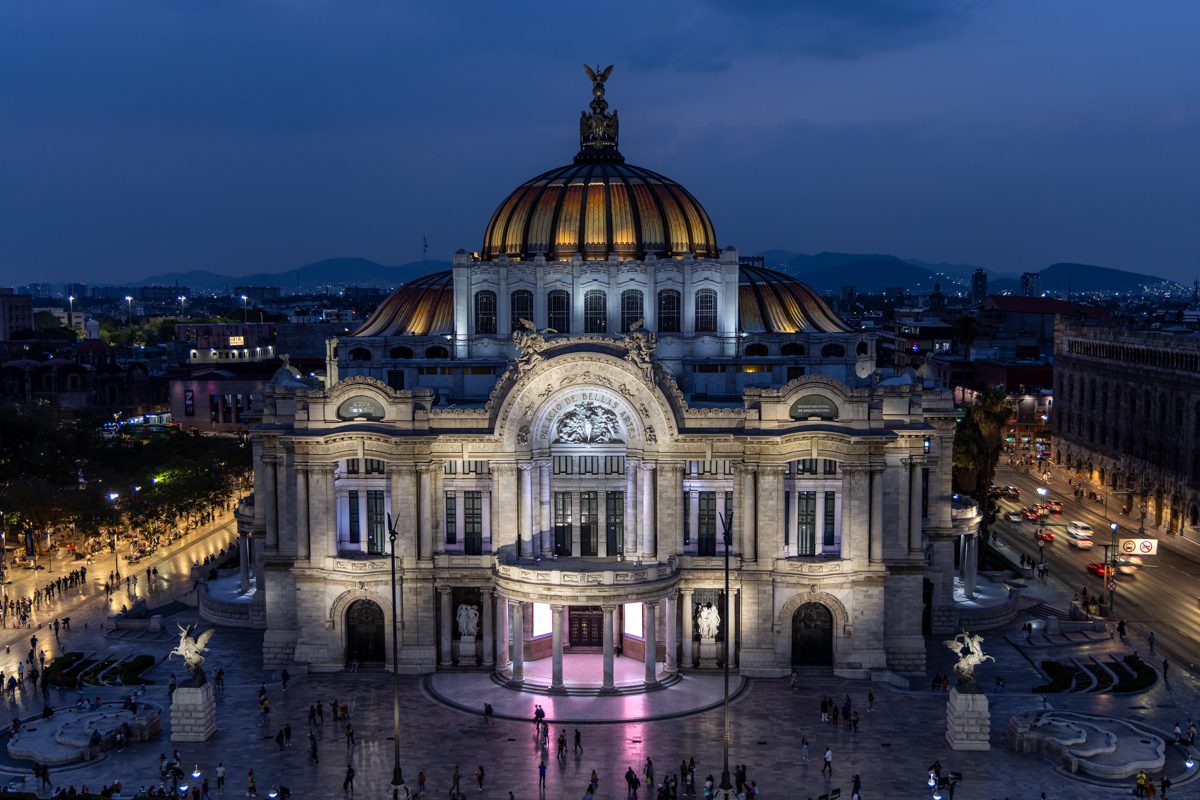
MEXICO CITY
Mexico city is a city of superlatives. It is the highest altitude capital in North America, the largest metro area on the continent, and home to more museums than anywhere else in the world (150-170). It has one of the largest public squares worldwide – the Zocalo (over 57,000 m²) and its Chapultepec Park is twice the size of Central Park. It is also the Oldest capital city in the Americas: founded as Tenochtitlán in 1325. It is full of amazing architecture and art, beautiful boulevards, monuments, and murals, a real treasure box for art aficionados.
Casa Estudio Luis Barragan
Our first visit was to Casa Estudio Luis Barragan, Mexico’s most celebrated modern architect, so it did not go in chronological order. Barragan is famous for many things: for combining bold colors with minimalist forms, interplaying light and shadows, use of water and gardens. The house was built in 1948 and is a UNESCO site. It’s considered one of the most important works of modern architecture in the world.
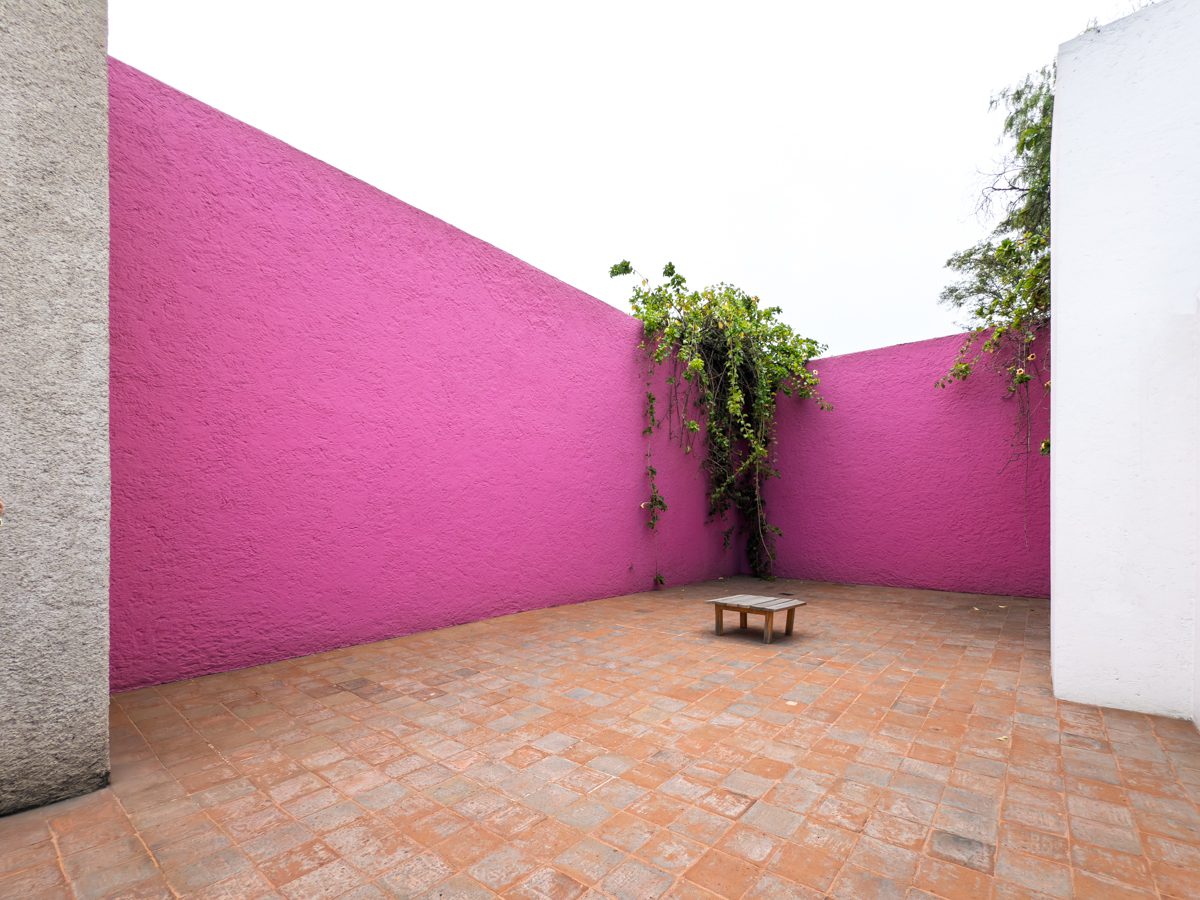
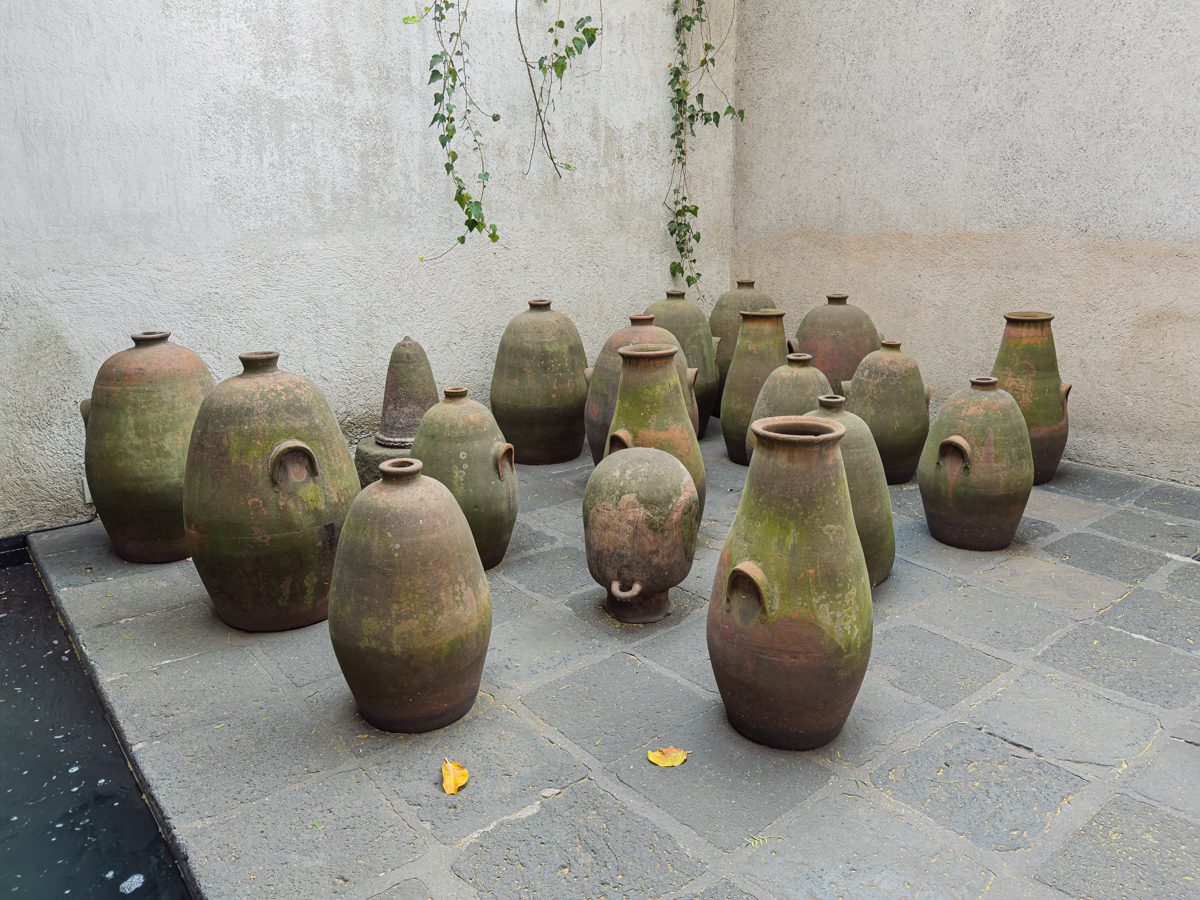
Coyoacan Neighborhood and Museums
We spent first part of our second day in the leafy residential neighborhood of Coyoacan (“Land of the Coyotes”) and visited Frida Kahlo and Leon Trotsky museums, and went on a muralism tour in the afternoon.
Frida Kahlo’s house or Casa Azul is where she spent most of her life, first with her family and then at Diego Riviera’s side. It has a lot of personal objects, some of their paintings and a collection of Pre-colombian sculptures.
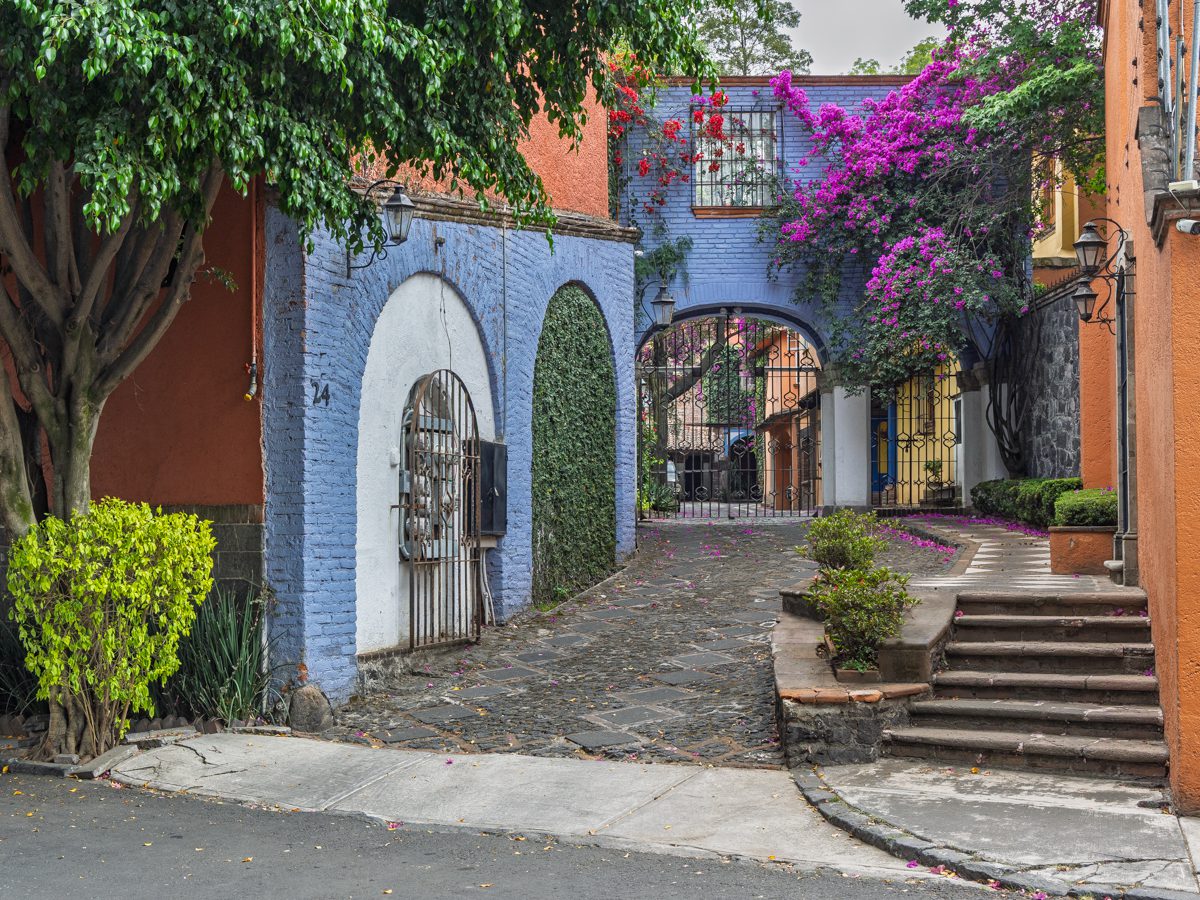
Leon Trotsky’s house museum is located nearby. This is where Trotsky and his second wife, Natalia Sedova, spent their final years. After being expelled from the Soviet Union in 1929, Trotsky eventually found refuge in Mexico City with the help of Diego Rivera and Frida Kahlo. In August 1940, he was assassinated inside this very house.
The fate of Trotsky’s family ranks among the most tragic of the Soviet era. All four of his children died before him, victims of illness, exile, or Stalin’s relentless persecution. His younger daughter died of tuberculosis at just 26; her two children vanished after their grandmother, who cared for them, was arrested. His elder daughter, Zinaida, initially accompanied her father into exile but was forced to leave one of her daughters behind in Russia. She later contracted tuberculosis and took her own life, unable to reunite with her husband or her lost child.
Trotsky’s sons suffered similar fates. Sergei, the younger, was arrested in 1937, deported to Siberia, and executed during Stalin’s purges at the age of 29. Lev, the elder, settled in Paris in 1933 but died shortly afterward from complications following an appendectomy — widely suspected to have been arranged by the Soviet secret police (GPU).
Murals
We spenty the afternoon of our second day on a muralism guided tour. Dream of a Sunday Afternoon in Alameda Park by Diego Rivera featured below is one his most famous murals.
It is not an actual dream, but a monumental mural painted by Diego Rivera between 1947 and 1948. Stretching across 15 meters, the work presents a panoramic, dreamlike vision of Mexican history. More than a hundred figures from different eras fill the scene, among them Hernán Cortés, Porfirio Díaz, Frida Kahlo, and Rivera himself as a child.
The mural unfolds as a symbolic walk through the nation’s past — from conquest and colonial rule to dictatorship and revolution — culminating in an image of modern Mexico. Rivera’s crowded, surreal composition invites viewers to reflect on the struggles and contradictions that shaped the country’s identity.
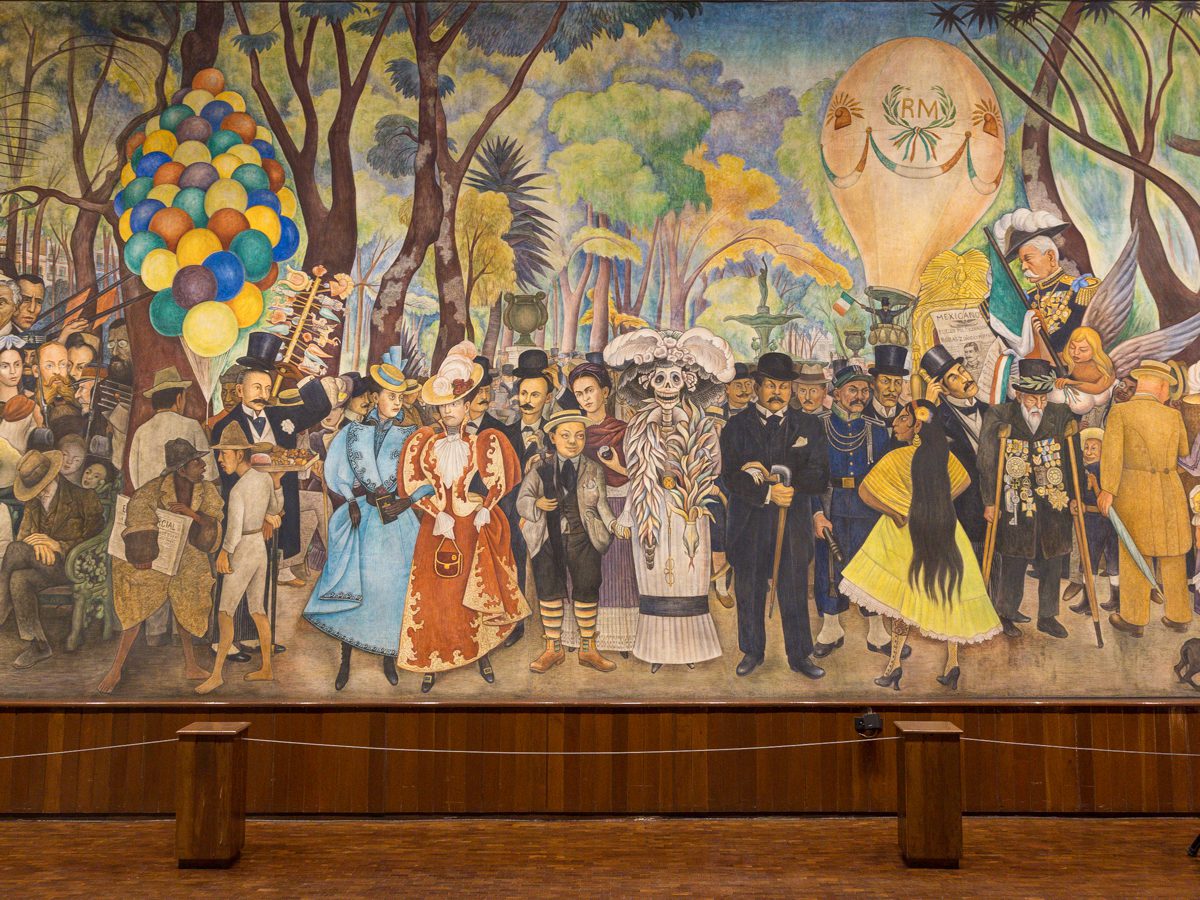
Rivera conceived of his murals as a kind of “public scripture,” a way of narrating Mexico’s history and identity visually, much like the Bible tells stories through text. Instead of religious figures, his “saints” and “prophets” were revolutionaries, indigenous leaders, colonial figures, workers, and artists.
The first mural shows laborers at work in a mine and is located inside the Palacio Nacional. It was paid for by the Mexican government after the Mexican Revolution (1910-1920).
The other murals in the gallery are part of the Carcamo de Dolores Museum in Chapultepec Park commissioned by Mexico City Department of Waterworks painted in 1951. This was built to celebrate the completion of a massive hydraulic project that brought fresh water to Mexico City.
Chapultepec Castle and Anthropology Museum
The next day was dedicated to Polanco neighborhood Chapultetec Park and Anthropology Museum.
A brief history of Chapultepec Castle:
Rising on what the Aztecs called Chapultepec, or “Grasshopper Hill,” the site was once a sacred retreat for their rulers. In 1785, Spanish authorities built a summer palace for their Viceroy, but by 1833 it had become Mexico’s Military Academy. The castle gained immortal significance in 1847 during the Mexican-American War, when young cadets—the Niños Héroes—died defending it against U.S. forces. From 1864 to 1867, it became the only royal castle in North America, serving as the residence of ill-fated Emperor Maximilian I and Empress Carlota. After the empire’s collapse, President Manuel González declared it the official presidential residence in 1882, a role it held until 1934, when it was converted into the National Museum of History.
The Imperial Tragedy
The castle’s most dramatic chapter ended in tragedy: Maximilian was executed in Querétaro in 1867, while Carlota, stricken with madness after her futile search for European support from Napoleon III of France, Pope Pius IX, and even the Belgian royals, lived in seclusion until her death in 1927. Their fate left a haunting shadow over Chapultepec’s imperial legacy.
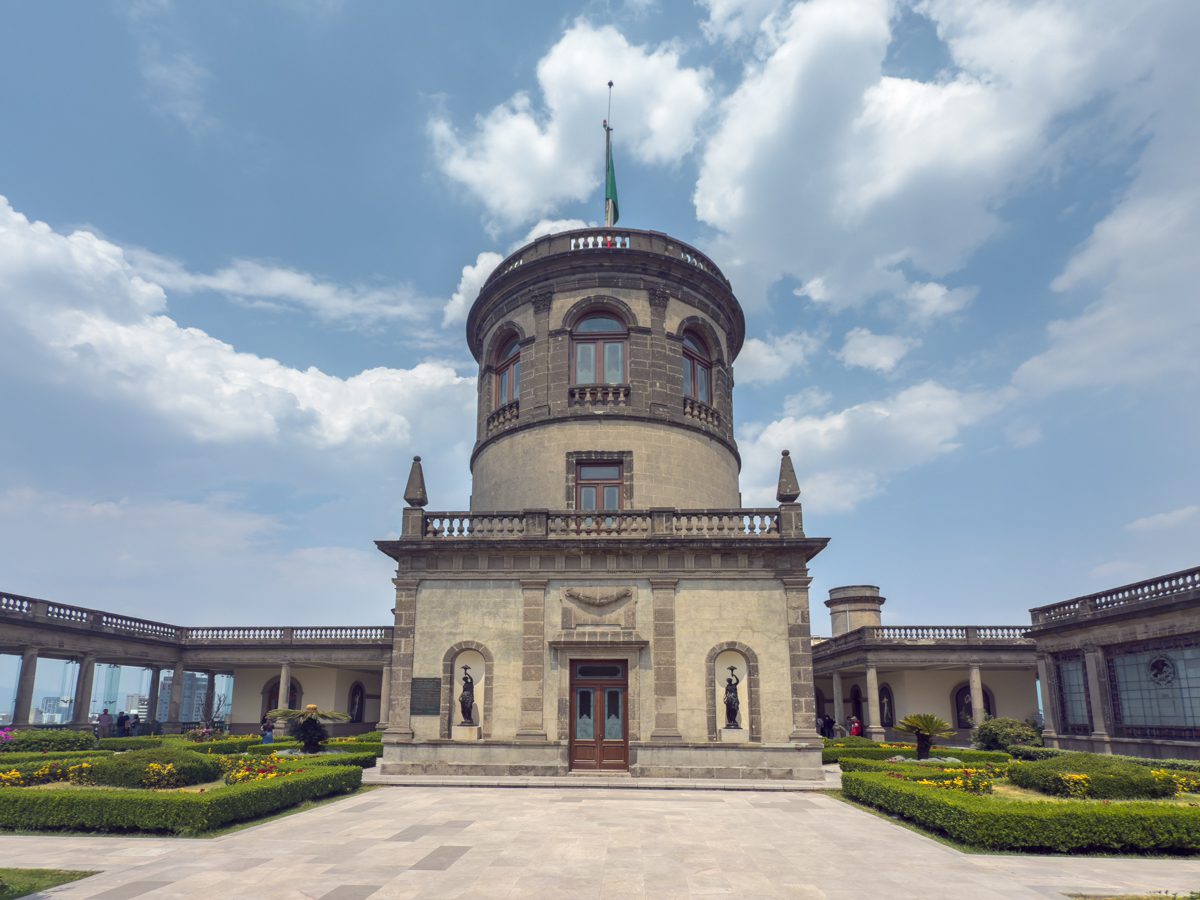
The beautiful stained glass windows featured below were imported from France in the 19th century during the time of Emperor Maximilian I and later under President Porfirio Díaz, who both wanted the castle to reflect European imperial and aristocratic taste. They are mythological and allegorical figures from classical Europe: Diana – goddess of hunt and the moon, Ceres – goddess of agriculture and others representing knowledge, art, beauty, and moral ideals.
Museo Nacional de Antropología (MNA)in Mexico City is one of the greatest museums in the world and the most visited in Mexico City. The building is an icon, its huge umbrella fountain in the courtyard symbolizing nourishment and life. The museum’s purpose is to show the continuity of Mexico from ancient civilizations to today’s indigenous peoples, tying pre-Hispanic roots to their modern identity and showing the story of the country’s past. It is huge and holds over 600,000 artifacts in its collection from many different civilizations including the Olmecs, Maya, Aztecs (Mexica), Teotihuacan, Toltecs, Zapotecs, Mixtecs, and many more.

Architecture and Monuments
Mexico City is a treasure trove of architectural styles — from pre-Hispanic ruins to colonial cathedrals, modernist masterpieces, and bold contemporary towers. Most of those buildings are concentrated in and around Zocalo including amazing Palacio des Bellas Artes, Palacio Postal, the House of Tiles (Casa de Azulejos), and the Gran Hotel.
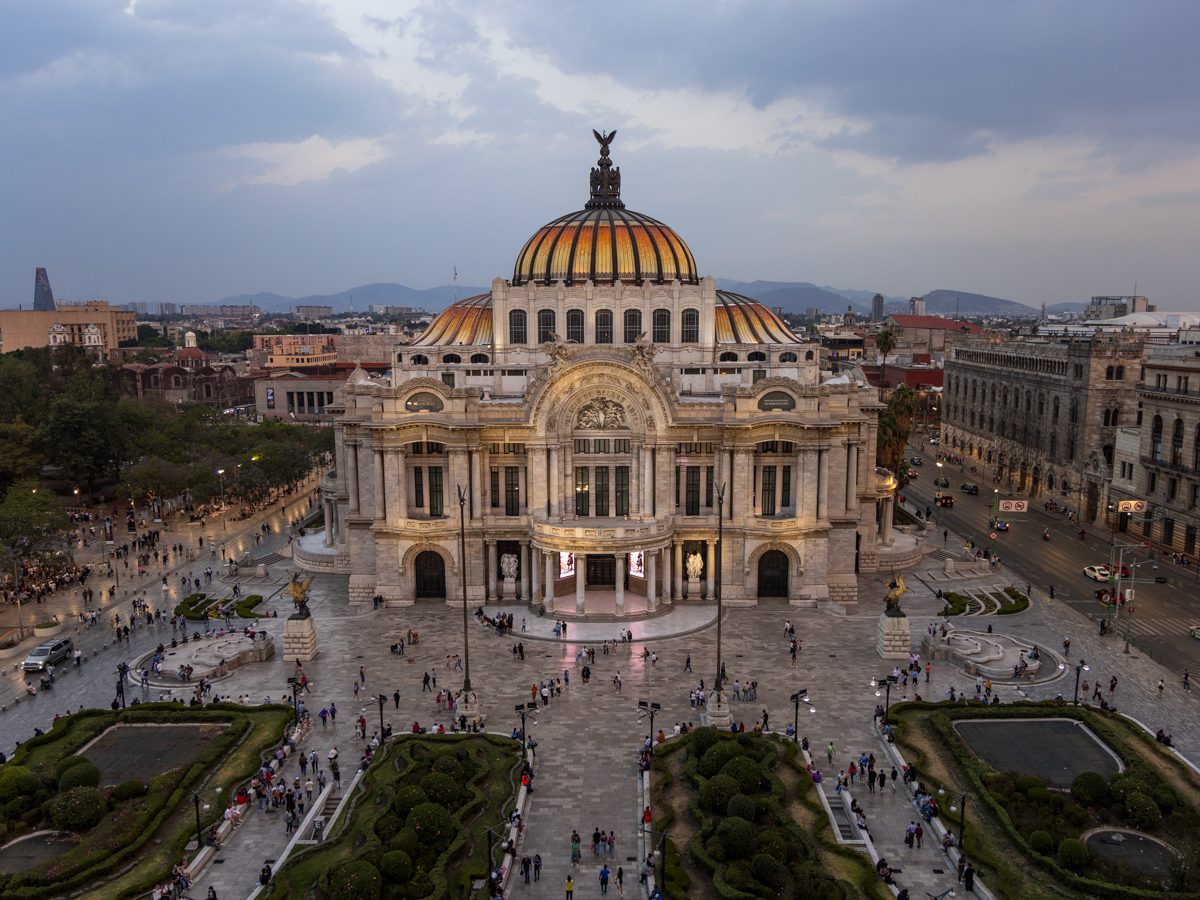
The House of Tiles was originally built in the 16th century while the famous Puebla style tile facade was added in 18th century. Two other palaces were designed by an Italian architect Adamo Boari in the beginning of the 20th century during the era of Porfirio Diaz’s dictatorship. Palacio Postal combines Spanish Renaissance Revival with Venetian Gothic and Art Nouveau details, while Palacio las Bellas Artes is built in Art Nouveau style and was finished by a Mexican architect.
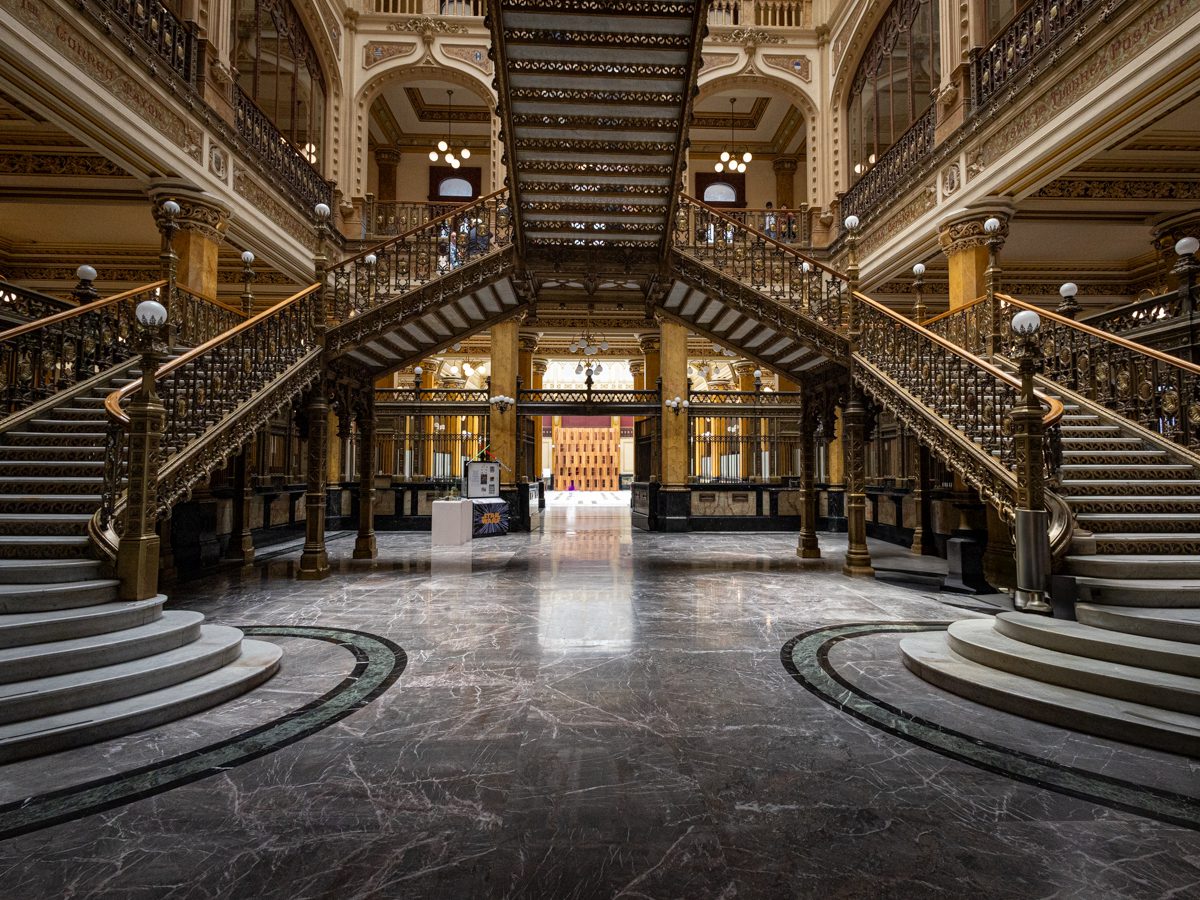
Zocalo is also home to Metropolitan Cathedral, the first Cathedral to have been built in the Americas.

The city is also full of grandiose monuments, like the Neoclassical one to Juarez, who was the first democratically elected indigenous president in post colonial Latin America. He was born to a very poor Oaxacan family, became an orphan at a very early age and worked as a shepherd. He then moved to Oaxaca at the age of 12, and was supposed to become a priest. Later he was however able to switch his studies to law. He later served as a judge, governor of Oaxaca, and Supreme Court justice.
He later led the resistance to French intervention that installed Maximilian as the Emperor of Mexico defeating him and the French forces. He is credited for passing the Reform Laws (La Reforma) that included separation of church and state,
confiscation of church lands, civil registry for births, marriages, and deaths, equality before the law (no special privileges for clergy or military).
However Mexico kept swinging between liberal reforms and authoritarianism after him.
Alvaro Obregon was another liberal president. He was a highly successful general in the Mexican Revolution, and was assassinated in 1928 by a Roman Catholic who held Obregón responsible for religious persecutions.
Modern Art
Museum of Modern Art and its sculpture garden is located in Chapultepec Park. It exhibits works by Mexican artists of the 20th century. We were mesmerized by paintings of Remedios Varo, the Spanish Mexican surrealist painter. During the Spanish Civil War, she fled fascism with other intellectuals and artists. By 1941, she had arrived in Mexico City, where she spent the rest of her short life. Mexico gave her stability, community, and inspiration. She joined a circle of exiled artists and intellectuals — including Leonora Carrington (her close friend), Kati Horna, and others. While she had connections to European surrealism, her Mexican period is her most original, weaving together indigenous influences, medieval mysticism, and alchemy.
LagoAlgo,located in the second section of Chapultepec Park, is another gem of modernist architecture and design which doubles as an art and gastronomy space housing temporary art exhibitions and a restaurant. It was designed by a 24 year old architect.

Pyramids
Located about 40 km northeast of modern Mexico City, Teotihuacán was founded around 100 BCE and reached its height between 200–600. At its peak, it had 125,000–200,000 inhabitants, making it one of the largest cities in the world at the time. The city’s layout is carefully planned along the Avenue of the Dead, featuring the Pyramid of the Sun, Pyramid of the Moon, and the Temple of the Feathered Serpent. It predates the Aztecs by centuries; when the Aztecs arrived (14th century), the city was already long abandoned. Around 550 CE, Teotihuacán fell. Possible causes: internal unrest (evidence of palaces being burned), drought, ecological collapse, attacks from rival groups.

Ballet
Each performance is like a journey through Mexico’s cultural landscape with dances from various regions.
The shows here are especially stunning because of the backdrop: the stained-glass Tiffany curtain depicting the Valley of Mexico.

Markets and Food
